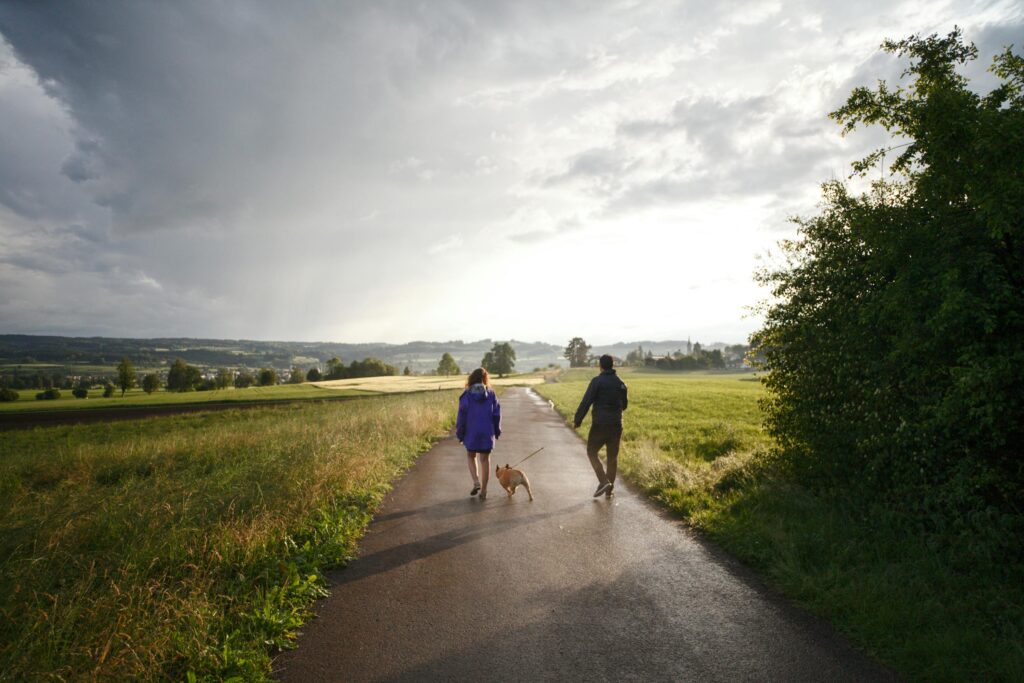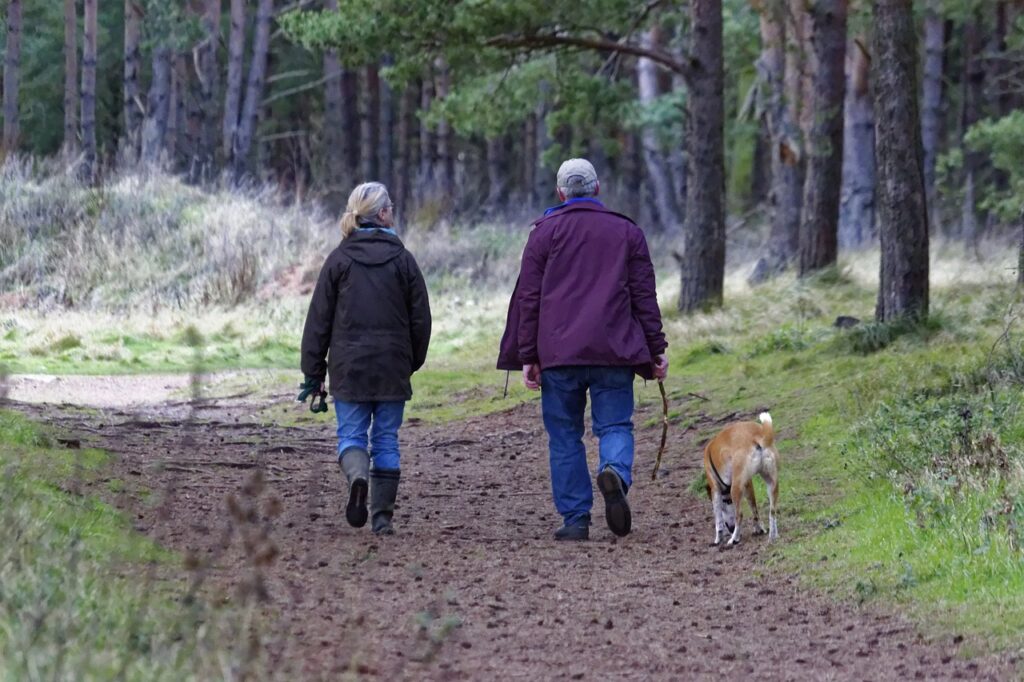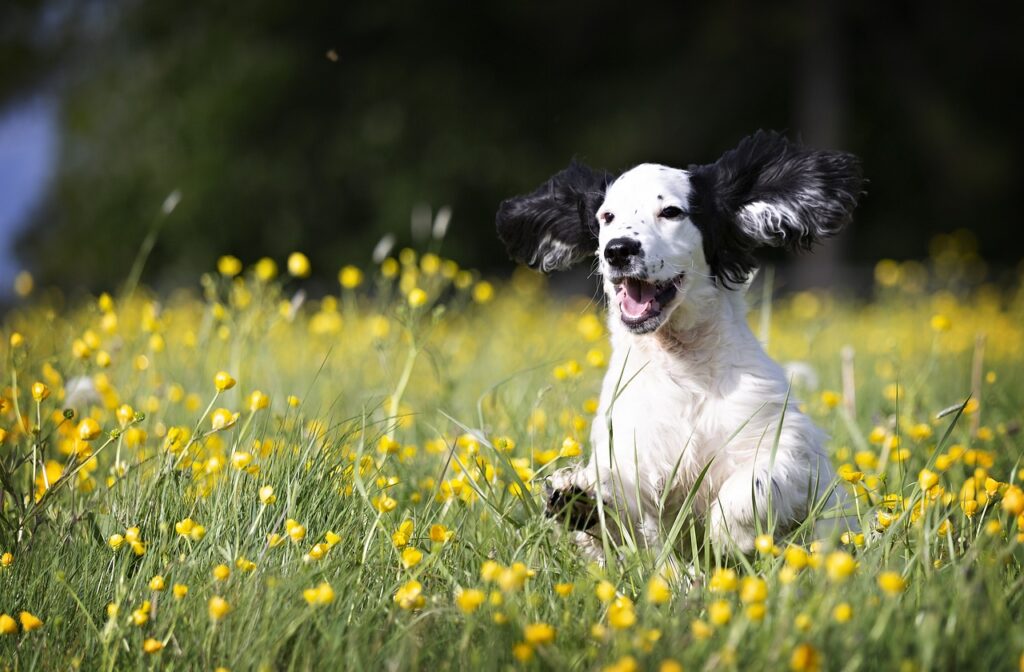If you’ve ever observed a pack of tail-wagging pooches on a group walk, you might understand the joy that comes from a well-organized community dog-walking group. Not only does it transform routine strolls into an exciting social event for both dogs and their owners, but it also serves as a perfect avenue for your furry best friend to socialize. Joining paws to collectively navigate the sidewalks doesn’t just happen by a wag of the tail; it takes thoughtful planning and consideration to get the leash-party started!
Wondering how to jumpstart your own pack of neighborhood pups? Finding fellow dog-walking enthusiasts is just the first paw print. Whether sharing the initiative through social media, local ads, or casual park meet-ups, the key is to start with a small squad to keep things comfortable and manageable. But it’s not all fun and games; setting the scene for a floppy-eared fiesta also involves establishing safety protocols and clear communication among pet parents. Once your group’s foundations are in place, you’re well on your way to embarking on those tail-tastic adventures!
Steps to Initiating Your Community Dog-Walking Group
Thinking about starting a community dog-walking group? That’s a brilliant idea to add some extra tail wags to your routine walks. Not only does it make the walks more enjoyable, but it’s also fantastic for socializing your fluffy buddies. Before you dive in, there are a few steps to consider to make sure everything goes smoothly for both the two-legged and four-legged members.
Finding like-minded individuals, setting some ground rules, and managing the group doesn’t have to be a daunting task. Keep in mind that starting small with a manageable number of dogs ensures all canines are comfy and ready to mingle. And remember, it’s all about creating a safe, fun environment where everyone – pups included – can make new friends.
Find Fellow Dog-Walking Enthusiasts
First thing’s first, scout for potential pack members. Chatting with other pet parents during strolls, putting up posters in local hotspots, or utilizing platforms like NextDoor can help gather a group. Safety is top dog here, so make sure to involve pet parents who are enthusiastic about a structured walking experience.
Starting with a small group can also make your dog-walking club more manageable and personal, leading to stronger bonds between members. Just remember to check if there are already existing clubs in your neighborhood to potentially join forces.

Decide On The Group’s Structure And Size
Setting the framework of your club is crucial. Consider the number of walkers – around five can be the sweet spot – to keep the walks regular and easy to manage. It’s also essential to ensure that all canine companions are vaccinated, well-trained, and sociable to promote a pleasant and safe environment.
Microchipping is another aspect to look into as it’s vital in reuniting any pup that may get lost during the adventures. Safety and fun should go hand in paw, laying the groundwork for a successful and enjoyable club.
Establish Clear Communication Channels
Communication is key, just like a good recall command. Make use of social media or set up an email list to connect members. A Facebook page or a shared online calendar can help in staying updated on upcoming walks and vital pack news. This way, everyone’s on the same trail when it comes to scheduling and any important updates or changes.
Considering everyone’s schedules is also paramount; a fixed walking schedule with specific times and dates encourages regularity and respect for each member’s time.
Set Group Guidelines and Safety Protocols
Safety comes first, so it’s essential to have clear guidelines in place. In addition to requiring all dogs to be on the right type of secure leashes, consider the Bandana System to signal any pooches that need extra space. Also, establish norms like maintaining control, matching dog sizes, and respecting each other’s training styles. You want to ensure a safe stroll for everyone involved.
Always remember, as a dog parent, you’re responsible for your own dog’s poop-scooping duties. It keeps the walks pleasant for everyone and respects public spaces.
Manage the Group Dynamics
Pack dynamics are real, and the group should allow time for dogs to settle in and get comfortable with their walking pals, as behavior can shift in group settings. Understanding your dog’s body language and establishing a pack order can prevent any chaos and help manage interactions, adjusting as needed based on personalities and comfort levels.
Flexibility is your friend. Being open to route changes or pack order adjustments on the go can make a world of difference in keeping the pack calm and collected.
Plan Your Initial Meeting and First Walk
Now, for the exciting part — getting the group together for the first time. Pick a calm route and time for this initial meeting to help your furry friends acclimatize without the added pressure of busy surroundings. It’s all about making sure that first impression is a positive one for all involved.
During this first huddle, it’s the perfect moment to chat about goals, share thoughts on walking etiquette, and generally get to know each other. This meetup sets the tone for all your future jaunts, so keep it light, friendly, and above all, make sure everyone has a good time!
| Point of Interest | Details to Consider |
|---|---|
| Finding Members | Local parks, social media, flyers at veterinary clinics |
| Group Structure | Small size, rules for vaccination and behavior |
| Communication | Facebook, email lists, shared calendars |
| Safety Guidelines | Leashing, bandanas for shy dogs, poop-scooping |
| Managing Dynamics | Allowing dogs to adjust, flexibly setting pack order |
| Initial Meeting | Choosing a calm route, setting a friendly atmosphere |
Scheduling and Route Planning for Successful Dog Walks
Let’s talk about setting up your dog-walking group for success. Planning isn’t just about who’s coming, but also when and where you’re hitting the pavement. It’s like setting up a movie night, only instead of picking a film, you’re choosing the best times and paths to keep tails wagging. A consistent walking schedule is your friend here, bringing a sense of routine that dogs and humans alike will appreciate.
When you pick routes, think like a dog – safe and sniff-worthy locations are key. You’ll need to keep your pack in mind, considering their sizes, temperaments, and schedules. And don’t forget to factor in the weather and any local events that could turn a peaceful walk into a parade you never signed up for. Flexibility and communication are your best buddies in keeping everyone on track and happy.
Create a Consistent Walking Schedule
Just like your favorite TV show, a regular walking time gives everyone something to look forward to each week. Plus, dogs thrive on routine, so a consistent schedule can make the walks more enjoyable for them. Here are a few points to consider:
- Decide on a frequency that works for everyone — maybe you’re all weekend warriors or Wednesday walkers.
- Plan for alternative times for those who can’t make the regular slot, because life happens!
Remember to communicate the schedule clearly through group chats or shared calendars, so no one’s left out. If you’re all tech-savvy, consider using apps to keep everyone in the loop.
Select Dog-Friendly Routes and Locations
Finding the perfect route is all about balance. You want places that offer safety and stimulation for the dogs while being considerable of local residents. Here are some tips:
- Look for locations with enough space to comfortably walk the size of your group.
- Pick routes with minimal traffic to keep the dogs secure and the stress levels low.
And don’t forget that some days you might want to mix things up with a change of scenery. Variety is the spice of life, after all!
Consider Varied Walking Times to Accommodate Members
Everyone’s schedule is different, and that’s okay. To make sure no one misses out, think about offering walks at different times. Early birds might fancy a sunrise stroll, while night owls could prefer a moonlit trek. The key is to accommodate the diversity within your group.
You can use a poll or survey to find times that work best for the most people. And if it’s possible, have more than one walk leader to cover different days or times.
Utilize Route-Planning Tools for Efficiency
Back in the day, we’d unfold giant maps and hope for the best. These days, we’ve got route-planning tools that make life way easier. Websites like plotaroute.com help you to craft the perfect loop, taking into account distance and even terrain. It’s all about maximizing efficiency and safety, ensuring the dogs have a pawsitively good time.
| Route Planning Tool | Benefits |
|---|---|
| Plotaroute.com | Customize walking paths based on group’s needs |
Share these routes with your group so everyone knows where they’re headed, and there’s no confusion come walk time.
Account for Weather and Special Events
Is it going to rain, or is the sun planning to show off? Weather can be a deal-breaker for outdoor plans, so stay ahead of the game. Checking forecasts helps in deciding whether to put on sunglasses or carry umbrellas. And don’t forget about local events like parades or festivals that could affect your usual route.
By keeping an eye on these, you ensure each walk is enjoyable and hassle-free for everyone involved. If you need to make any last-minute changes, your trusty group chat will be invaluable here.
Growing and Maintaining an Active Dog-Walking Community
So, your dog-walking group is up and ambling — that’s fantastic! But the journey doesn’t stop with your first successful promenade. The key to a thriving community lies in its growth and ongoing engagement. You’ve got to keep things fresh, fun, and functional for both the furry and the two-legged participants. From leveraging social media to keeping in step with the needs of your group, you’ll want a game plan that ensures every outing is a tail-wagging good time.
Remember, it’s more than just walking; you’re creating a network of companionship for everyone involved. Encouraging a sense of community and belonging can turn your group from a simple weekly activity into a highlight in the calendar of your members — both human and canine. Let’s dive in and make sure your dog-walking group doesn’t just walk, but runs the distance!
Use Social Media to Foster Engagement and Share Experiences
Social media is an awesome tool to keep your group connected outside of the walks. Create a Facebook page, Instagram account, or whichever platform fits your group best. It’s a hub for sharing adorable dog pics, organizing events, sharing homemade dog treat recipes, and just celebrating the little moments that make your group special. Tag your members on Instagram in group photos — this helps to grow your presence online and could even attract new members!
By facilitating a space where members can engage and share their experiences, you contribute to a lively atmosphere. Utilizing hashtags, stories, and highlights to showcase your group’s adventures not only strengthens relationships but also serves as a digital scrapbook of all your fun times together.

Engage with Local Pet Businesses for Support
Collaborating with local pet businesses can add a ton of value to your group. It’s worth chatting with pet shop owners, veterinarians or pet cafes to see if they would like to support your club. They might offer discounts, sponsor events, or provide expert advice during your walks. This partnership can be beneficial for both sides, and it gives your group an edge.
Pet businesses could offer treats for good behavior, or contribute items like eco-friendly poop bags — essential items for responsible dog ownership that also raise awareness about the importance of waste management.
Implement Reward Systems and Theme Walks for Participation
Everyone loves a bit of recognition for their efforts, and this rings true in dog walking groups too. Implementing a reward system can add an extra incentive for regular participation. Think about a ‘Walker of the Month’ or ‘Pawfect Attendance’ award! It can be as simple as a social media shoutout or as elaborate as a goodie bag with dog treats and toys.
Occasional theme walks can also spice things up. A Halloween costume parade on legs (and paws) or a Christmas jingle bell jog will keep things interesting. Turning regular walks into small events creates excitement and gives members something to look forward to.
Address Conflicts and Adjustments Proactively
Even in the most chilled-out dog walking crew, sometimes the fur can fly. Conflicts, whether between dogs or humans, must be addressed promptly and proactively. Establishing a clear process for dealing with disagreements and issues helps maintain harmony within the group.
Open communication is crucial, so provide a way for members to voice concerns and know that they will be taken seriously. This approach not only solves problems but prevents them from growing.
Keep the Focus on Fun and Friendship for Dogs and Owners
At the end of the day, the heart of your dog-walking group is the friendship and fun that it fosters. Keeping things light-hearted, flexible, and enjoyable is fundamental. While a bit of structure is necessary, too many rules can make the walks feel like a chore.
Maintain that spirited atmosphere by celebrating the unique personalities of each dog and owner team, and always be open to suggestions on how to enhance the group experience. After all, it’s these shared walks and talks that turn acquaintances into friends, and dogs into playmates.
| Activity | Purpose |
|---|---|
| Using Social Media | Connects members, shares memories, attracts new members |
| Partnerships with Local Businesses | Provides discounts, sponsorship, and expert advice |
| Reward Systems | Encourages participation and recognizes members |
| Theme Walks | Adds variety and excitement to the group |
| Proactive Conflict Resolution | Maintains group harmony and addresses issues quickly |
| Focusing on Fun and Friendship | Ensures the group remains an enjoyable and social space |


